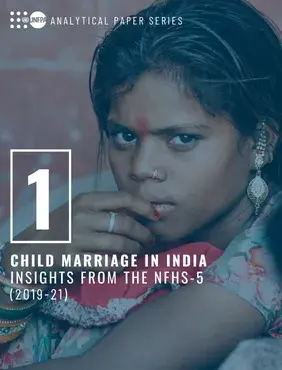Child marriage is closely associated with poverty and is likely to increase girls’ vulnerabilities. Girls who marry young are often socially isolated and cut-off from family, friends and other support systems. They may face an increased risk of limited opportunities for education and decent work. In spite of the Prohibition of Child Marriage Act (2006), the practice of child marriage remains pervasive due to factors spread across the socio-ecological spectrum, including structural inequalities and regressive social norms.
The objective of this analysis is to study and trace the trends in the practice of child marriage in India. The review is based on the latest data and evidence and will examine socio-economic determinants to understand the specific role of these factors, which perpetuate this harmful practice.


